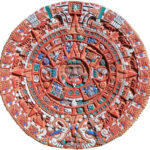Learning to design tattoos isn’t just about the artwork itself; understanding tattoo placement is equally crucial. Knowing where a tattoo will best suit the body is a key skill for any aspiring tattoo artist. Without a solid grasp of tattoo body placement, it’s challenging to create designs that truly complement the wearer’s anatomy and flow naturally with their form. This is where a Tattoo Placement Chart becomes an invaluable tool.
Understanding the Tattoo Placement Chart and Its Importance
A tattoo placement chart is essentially a visual guide illustrating different areas of the body suitable for tattoos. It’s more than just a map; it’s a resource that helps artists and clients visualize how a design might look on various body parts. For aspiring tattoo artists, understanding this chart is fundamental for several reasons:
- Design Harmony: Placement directly impacts how a tattoo design is perceived. A design that looks stunning on paper might appear awkward or distorted if placed incorrectly on the body. The chart aids in visualizing the design’s flow and fit.
- Client Consultation: When consulting with clients, a tattoo placement chart can be an excellent communication tool. It allows artists to clearly explain placement options and help clients make informed decisions based on visual references.
- Pain Levels: Different body areas have varying levels of pain sensitivity. A placement chart can indirectly guide conversations around pain expectations, as some charts also incorporate pain level indicators for different zones.
- Professionalism: Demonstrating knowledge of tattoo placement showcases professionalism and expertise. Clients gain confidence when they see an artist understands the nuances of body placement and its impact on the final tattoo.
Key Considerations for Tattoo Body Placement
While a tattoo placement chart provides a general guide, several factors should be considered for optimal tattoo body placement:
- Body Contours and Muscle Movement: The body is not a flat canvas. Understanding how muscles move and how skin stretches and folds is vital. Placements should complement natural body lines and movement.
- Tattoo Size and Detail: The size and level of detail in a tattoo design heavily influence placement. Intricate designs might require larger, flatter areas like the back or thigh, while simpler designs can suit smaller areas like the wrist or ankle.
- Visibility and Lifestyle: Consider the client’s lifestyle and desired visibility. A tattoo on the hand or neck is far more visible than one on the ribs or thigh. Placement should align with the client’s professional and personal preferences regarding visibility.
- Pain Tolerance: As mentioned, pain levels vary across the body. Sensitive areas like ribs, feet, and hands are generally more painful than fleshy areas like the outer thigh or upper arm. Client’s pain tolerance should be a part of the placement discussion.
- Design Flow and Storytelling: For larger, multi-element tattoos, placement is crucial for creating a narrative flow across the body. Consider how different placements can contribute to the overall storytelling and visual impact of the complete tattoo.
Mastering Tattoo Placement: A Step Towards Professionalism
Becoming proficient in tattoo placement is a significant step in developing as a tattoo artist. It moves beyond simply applying ink to skin and delves into the art of body modification, where the tattoo becomes an integral part of the wearer’s physical expression.
For aspiring artists looking to accelerate their learning and master not only design but also crucial aspects like tattoo placement, structured guidance is invaluable. Programs like the Artist Accelerator Program offer a focused curriculum that can significantly shorten the learning curve, providing aspiring artists with the essential skills and knowledge to excel. This includes a deep understanding of tattoo placement, ensuring that every tattoo is not only beautifully designed but also perfectly placed to enhance its visual impact and the wearer’s satisfaction.
Click here to learn more about the Artist Accelerator Program.
